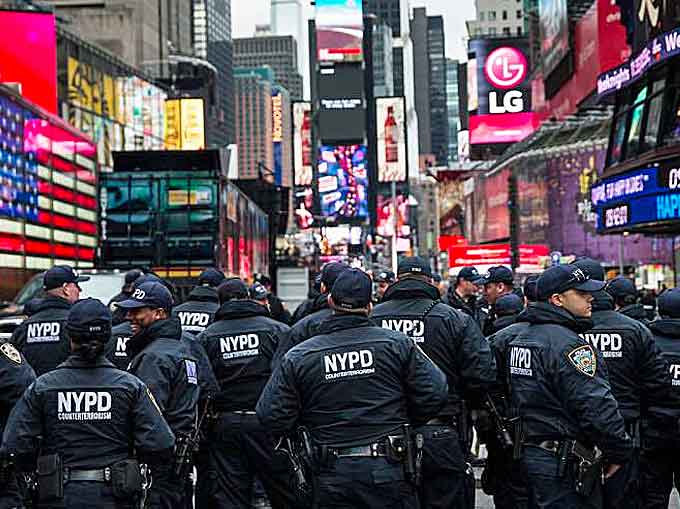
Although the New York Police Department (NYPD) has had an existent policy in place for some time, facial recognition technology is rapidly evolving, and as such, the department deemed it appropriate to evaluate the existing policy and update it accordingly.
By introducing the new revised policy, it also serves to educate all members of the department of the rules which surround the use of facial recognition (also known as facial comparison) technology, and ensure they have the opportunity to memorialize these rules.
Facial recognition is a digital technology used by the NYPD exclusively for the purpose of comparing images obtained during criminal investigations with lawfully possessed arrest photos.
(Law enforcement agencies around the globe are utilizing facial recognition technology to enhance their investigators capabilities to better serve citizens who have been victimized. Following a successful trial, the Metropolitan Police have begun is to use facial recognition cameras operationally on the streets of London for the first time. Courtesy of Sky News and YouTube. Posted on Jan 24, 2020.)
When used in combination with human analysis and additional investigative steps, facial recognition technology is an important tool in solving crime, increasing public safety, and bringing justice for victims.
The NYPD has never arrested anyone on the basis of a facial recognition match alone, it is merely a lead in the investigative process.
At the center of these revisions are explicit guidelines in the NYPD Patrol Guide detailing the appropriate scope, uses, and procedures members of the service must follow when utilizing facial recognition technology.
This Patrol Guide provision is effective immediately and is part of a continued effort to increase transparency and promote trust-all within the community, while enhancing the capabilities of investigators to better serve New Yorkers who have been victims of crime.

“When you look at policing and the evolution of technology proliferation of cameras, I think it is self-evident that as businesses and private citizens deploy the use of cameras more and more, it logically leads to the next question of how you’re going to use those images once you recover someone committing a crime,” explained NYPD Police Commissioner Dermot Shea.
“It is our responsibility to ensure investigators are equipped with effective technologies to bring justice to New Yorkers who have been victimized.”
“When a crime occurs and there is video or images of a perpetrator committing a crime, and that perpetrator is unidentifiable, trained investigators take that image and compare it against lawfully obtained arrest photos.”
“A facial recognition match is merely a lead; it is not probable cause.”
“This new policy clearly defines the permissible use of facial recognition technology and it strikes the right balance between public safety and privacy.”
(Meet the New York City Police Department’s new Police Commissioner, Dermot Shea. Courtesy of the NYPD and YouTube. Posted on Dec 2, 2019.)
Facial recognition technology must only be used for legitimate law enforcement purposes.
Specifically, the following are the only authorized uses for employing facial recognition technology:
-
To identify an individual when there is a basis to believe that such individual has committed, is committing, or is about to commit a crime,
-
To identify an individual when there is a basis to believe that such individual is a missing person, crime victim, or witness to criminal activity,
-
To identify a deceased person,
-
To identify a person who is incapacitated or otherwise unable to identify themselves,
-
To identify an individual who is under arrest and does not possess valid identification, is not forthcoming with valid identification, or who appears to be using someone else’s identification, or a false identification, or
-
To mitigate an imminent threat to health or public safety (e.g. to thwart an active terrorism scheme or plot, etc).
The NYPD is the largest and one of the oldest municipal police departments in the United States, with approximately 36,000 officers and 19,000 civilian employees, responsible for policing an 8.5-million-person city.

By performing a wide variety of public safety, law enforcement, traffic management, counter-terror, and emergency response roles, the NYPD has achieved spectacular declines in both violent and property crime in the past 25 years.
The NYPD, which is divided into major bureaus for enforcement, investigations, and administration, has 77 patrol precincts with patrol officers and detectives covering the entire city.
Additionally, the department has 12 transit districts to police the subway system and its nearly six-million daily riders, and nine police service areas (PSAs) to patrol the city’s public housing developments, which are home to more than 400,000 residents.
Uniformed civilians also serve as traffic safety agents on the city’s busy streets and highways, and as school safety agents, protecting public schools and the over-a-million students who attend them.
Learn More…
(Law enforcement agencies like the New Orleans Police Department are adopting artificial-intelligence based systems to analyze surveillance footage. WSJ’s Jason Bellini gets a demonstration of the tracking technology and hears why some think it’s a game changer, while for others it’s raising concerns around privacy and potential bias. Courtesy of The Wall Street Journal by Drew Evans. Courtesy of NEC and YouTube.)
















